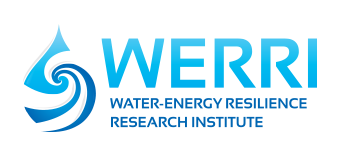Gary Andersen, Senior Scientist
Research Interests / Specializations:
Microbial ecology, genomics, diversity in extreme environments
Research Description:
My research focus is in the area of microbial ecology and includes the examination of phylogenetic diversity in natural environments. The Andersen Group uses molecular approaches to study the dynamics of microbial community structure under changing environmental conditions. This includes the development of new techniques to dissect the microbial diversity of complex ecosystems. The long-term goal of my research is to integrate different fields of biology (i.e., genomics, ecology, molecular biology, and bioinformatics) to provide insight into different type of interactions within microbial communities. This knowledge may be used to harness the existing capabilities of beneficial microbes to improve water quality, reduce contamination and limit the amount of carbon released into the atmosphere.
Current Projects
Microbial Source Tracking in California Watersheds: Human impact, in the form of increased urbanization, agricultural practices, wildlife management and decaying infrastructure has resulted in a marked decrease in water quality in California. Our lab is interested in identifying sources of fecal pollution as a first step towards control and mitigation. We are far more at risk of getting sick from water contaminated with sewage, septic wastes and other human sources compared to non-human fecal sources such as birds or grazing animals. To accurately differentiate sources we have developed a technology to comprehensively identify the total microbial community composition in water samples including the hundreds of source-specific microbes from each fecal source. We are using this method to assess risks at contaminated beaches, develop Total Maximum Daily Load (TMDL) to calculate the maximum amount of pollution that a recreational beach can receive and still meet water quality standards and, finally, determine how the fecal-specific species signals change over time in water.
Thermophilic Composting: Our current thermophilic composting project examines how the microbial community in the source material changes in the lifecycle of the composting process. While much attention has been given to the design and engineering of sanitary waste composting systems, there is little understanding of the microbial process itself. Understanding microbial community dynamics is essential to optimize not only the process, but also the overall safety of such practices. Assuring complete pathogen destruction in fully processed compost will increase the acceptance of this process as an alternative to water transport methods for waste disposal.
Microbial Enhanced Hydrocarbon Recovery: A fundamental understanding of microbial community structure and function, and its linkage to biogeochemistry in petroleum reservoirs, may enable control of reservoir souring, the release of highly toxic and corrosive hydrogen sulfide through the reduction of sulfate. Recent studies suggest that most petroleum reservoirs have well-established microbial communities and that these communities have had a major long-term impact on the evolution of petroleum. Perturbations to this community would not only alter community structure and function, but reservoir geochemistry as well, impacting reservoir quality and oil recovery. The objective of this project is to develop a systems biology approach utilizing high-resolution, molecular methods to enable monitoring, characterization, and ultimately lead to the reduction of reservoir souring.
Microbial Community Characterization with the Berkeley Lab PhyloChip: The PhyloChip is a high-precision microbial community assessment tool that can simultaneously track both high-abundance and low-abundance bacterial and archaeal taxa for an accurate measure of microbial community dynamics. The platform uses a proprietary bioinformatics pipelines combined with a high-density, photolithographic oligonucleotide microarray that identifies variation in 16S rRNA gene sequence. Built in controls for all steps of the microarray hybridization process and normalization of the probe intensity values result in the lowest technical variation observed by any microbial community analysis platform. The high chip-to-chip reproducibility allows the user to identify key microbes that respond to specific environmental variables. Advantages of the PhyloChip include:
- Analysis of entire pool of community 16S rRNA allows detection of very low abundance taxa.
- Reproducible for multiple replicates and comparable with other experiments.
- Controls built into each microarray to check performance characteristics of each sample.
- No artificial inflation of low abundance taxa (rare biosphere) due to sequencing errors.
- Responsive probes can be down-selected for follow up diagnostic tests.
We are currently using the PhyloChip to examine changes microbial community structure in diverse environments. We are also exploring methods to increase sample throughput.



